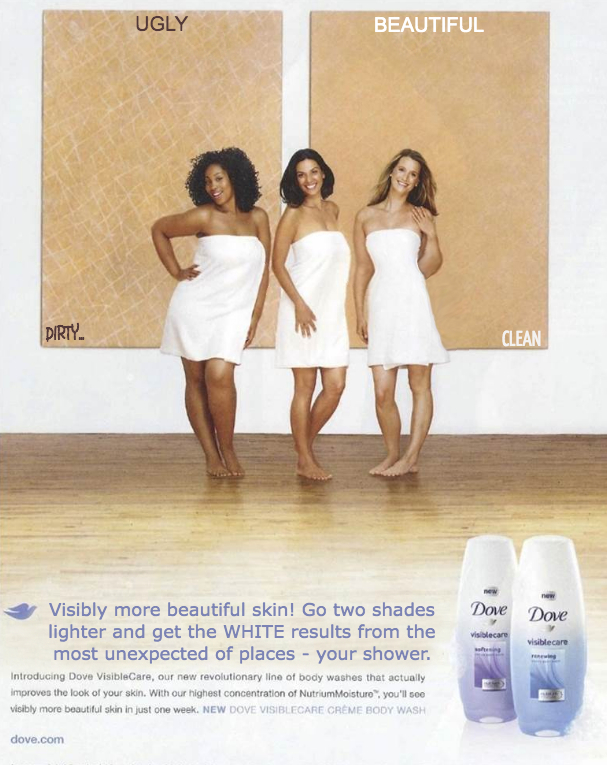
In 2011, Dove’s body wash campaign sparked immense criticism, and rightfully so. It portrays three women, in a gradient from darkest skin tone to the whitest skin tone. A black woman is standing in front of a “before” pane and a white woman is standing in front of an “after” pane. The ads fine print states: “Introducing Dove VisibleCare, our new revolutionary line of body washes that actually improves the look of your skin” (Dove qtd. in Moss, 2011).
Initially, some may applaud Dove for incorporating women of diverse ethnicities. However, this is quickly overlooked as it is evident that Dove is portraying that the lighter your skin tone, the more beautiful and clean you are, while women of colour -specifically black women- are rough, dirty and not as beautiful. This ad suggests their body wash can “improve the look of your skin”, and how they display this improvement is by going from a darker skin tone to a lighter one. Once again perpetuating the stigma that being “white” is the ideal for women’s beauty.
Not only does the ad have the women aligned based off of the gradient of their skin, but also their body size. The woman of colour is curvier, while the white woman is thinner. Dove clearly portrays the notion that being white and thin is the ultimate definition of beauty. Dove (2017) released a statement on their Facebook page stating they are “…committed to representing the beauty of diversity”. However, it is not enough to just incorporate diverse women in campaigns when they are then being compared to white women and portrayed as lesser than.
